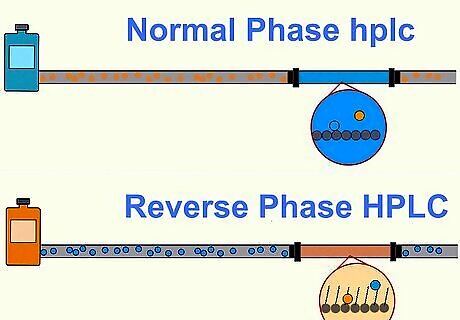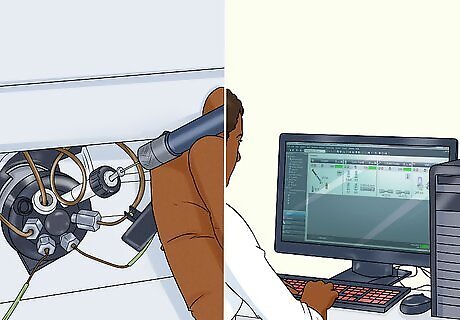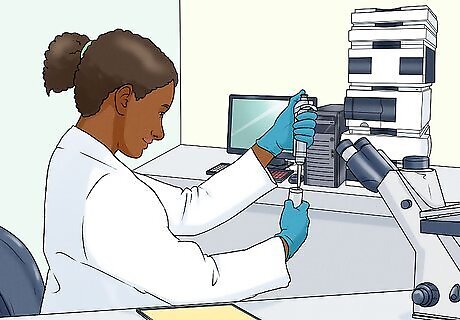
views

Follow the rules and regulations and wear your apron. Clean the HPLC. Switch it on and wait for it to get started. Prepare the instrument for analysis. Keep the solvent/solvents in the mobile phase in solvent reservoir or solvent tray. Solvent is used to separate the components of the mixture. In modern instruments, the mixture of solvents can be used as mobile phase which is called gradient elution. Elution is the separation into components. Use methanol-water or chloroform-heptane etc as your solvent.

Select the types of HPLC based on the relative polarity of the phases: Normal Phase: Use a comparative polar stationary phase than mobile phase if doing normal phase HPLC. Reverse Phase HPLC: Use a less polar stationary phase as compared to mobile phase. Generally reverse phase is used.

Feed the data into the system or program the HPLC. Assign the number to the solvents when you are opting for gradient elution. Specify the flow rate. Regulate the pressure of the pump.

Analyse your sample. Add your sample in the injector system. This is the mechanism which introduces the sample (the mixture to be separated) to the system. Load the stationary phase in the column. Start the HPLC by clicking on the start button on the screen of computer attached to it. Wait for some time for the separation of the mixture into components. The retention time is the time taken by solvent to separate the components, which is equal to the time when you enter the mixture in the column to when it is detected/analysed.

Develop your components. Wait for your mixture to be separated into its components. This is called development, when the sample contents will be detected by detector.

Observe the result. Look at the separation of components detected and recorded on graph. There will be various peaks corresponding to the components and their concentration.

Apply your findings to your work. There are many uses of HPLC in pharmacy, chemistry and industries like food production. Some of the significant applications are following. Use it for qualitative analysis by comparing retention time observed under identical conditions. Make use of HPLC for quantitative analysis, like assessing the concentration of components. Analyse lipid separation. Use it for answers in forensic work on criminal/poison cases.
















Comments
0 comment